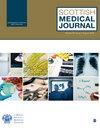Scottish Cardiac Society: 31st Annual General Meeting, 16-17 September 2022.
IF 1.4
4区 医学
Q2 MEDICINE, GENERAL & INTERNAL
引用次数: 0
Abstract
Introduction: Inherited Long QT syndrome (iLQTS) car-ries a risk of arrhythmic sudden cardiac death (SCD) and accurate diagnosis is important to allow preventative therapy. Clinical assessment is complicated as (i) QTc prolonga-tion may be acquired and (ii) QTc ranges in iLQTS patients overlap with the normal population. Use of a clinical risk score (Schwartz score, SS 1 ) >3.5 is recommended prior to genetic testing. 2 We audited SS of patients undergoing genetic testing for suspected iLQTS in the West of Scotland (WoS). Methods: Caldicott Guardian approval for the audit was granted by NHS GGC. Genetic test samples sent for diagnostic LQTS testing from the WoS between 2013 and 2021 were included. Demographic data were summarised. Test rates were expressed per 1000 population using publicly available estimates of population by health board. In a subgroup of patients from GGC (n = 81), health records were reviewed to determine SS. Receiver operating curves were used for sensitivity analysis. Results: LQTS testing results from 508 patients were included (62% female, mean age 38 years). Test rates per 100,000 population ranged from 7 (D&G) to 26 (GGC). Ninety-two tests (18%) were positive, 34 (7%) identi fi ed a VUS and 382 (75%) were negative. There were no signi fi - cant differences in results by age or gender. VUS result was more frequent with NGS versus Sanger sequencing (20/ 209 vs. 14/299, p < 0.05). Of positive tests, 63% were KCNQ1 (LQT1), 21% KCNH2 (LQT2) and 16% SCN5A (LQT3苏格兰心脏学会:第31届年度大会,2022年9月16-17日。
本文章由计算机程序翻译,如有差异,请以英文原文为准。
求助全文
约1分钟内获得全文
求助全文
来源期刊

Scottish Medical Journal
医学-医学:内科
CiteScore
4.80
自引率
3.70%
发文量
42
审稿时长
>12 weeks
期刊介绍:
A unique international information source for the latest news and issues concerning the Scottish medical community. Contributions are drawn from Scotland and its medical institutions, through an array of international authors. In addition to original papers, Scottish Medical Journal publishes commissioned educational review articles, case reports, historical articles, and sponsoring society abstracts.This journal is a member of the Committee on Publications Ethics (COPE).
 求助内容:
求助内容: 应助结果提醒方式:
应助结果提醒方式:


